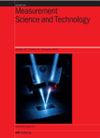Few-Shot Detection of Surface Roughness of Workpieces Processed by Different Machining Techniques
IF 3.4
3区 工程技术
Q1 ENGINEERING, MULTIDISCIPLINARY
引用次数: 0
Abstract
The traditional deep learning method for detecting workpiece surface roughness relies heavily on a large number of training samples. Also, when detecting the surface roughness of workpieces processed by different machining techniques, it requires a large number of samples of that workpiece to rebuild the model. To address these problems, this paper proposes a few-sample visual detection method for the surface roughness of workpieces processed by different techniques. This method first trains a base model using a relatively large amount of samples from one machining technique, then fine-tunes the model using small amounts of samples from workpieces of different techniques. By introducing contrastive proposal encoding into Faster R-CNN, the model's ability to learn surface features from small amounts of workpiece samples is enhanced, thus improving the detection accuracy of surface roughness of workpieces processed by different techniques. Experiments show that this method reduces the model's dependence on training samples and the cost of data preparation. It also demonstrates higher accuracy in surface roughness detection tasks of workpieces processed by different techniques, providing a new approach and insights for few-sample surface roughness detection.用不同加工技术加工工件的表面粗糙度微量检测
检测工件表面粗糙度的传统深度学习方法在很大程度上依赖于大量的训练样本。同时,在检测不同加工工艺加工的工件表面粗糙度时,需要大量的工件样本来重建模型。针对这些问题,本文提出了一种针对不同加工工艺工件表面粗糙度的少量样本视觉检测方法。该方法首先使用来自一种加工技术的相对较多的样本训练基础模型,然后使用来自不同技术的工件的少量样本对模型进行微调。通过在 Faster R-CNN 中引入对比提案编码,增强了模型从少量工件样本中学习表面特征的能力,从而提高了不同工艺加工工件表面粗糙度的检测精度。实验表明,这种方法减少了模型对训练样本的依赖,降低了数据准备的成本。它还在不同技术加工的工件表面粗糙度检测任务中表现出更高的精度,为少样本表面粗糙度检测提供了一种新方法和新见解。
本文章由计算机程序翻译,如有差异,请以英文原文为准。
求助全文
约1分钟内获得全文
求助全文
来源期刊

Measurement Science and Technology
工程技术-工程:综合
CiteScore
4.30
自引率
16.70%
发文量
656
审稿时长
4.9 months
期刊介绍:
Measurement Science and Technology publishes articles on new measurement techniques and associated instrumentation. Papers that describe experiments must represent an advance in measurement science or measurement technique rather than the application of established experimental technique. Bearing in mind the multidisciplinary nature of the journal, authors must provide an introduction to their work that makes clear the novelty, significance, broader relevance of their work in a measurement context and relevance to the readership of Measurement Science and Technology. All submitted articles should contain consideration of the uncertainty, precision and/or accuracy of the measurements presented.
Subject coverage includes the theory, practice and application of measurement in physics, chemistry, engineering and the environmental and life sciences from inception to commercial exploitation. Publications in the journal should emphasize the novelty of reported methods, characterize them and demonstrate their performance using examples or applications.
 求助内容:
求助内容: 应助结果提醒方式:
应助结果提醒方式:


